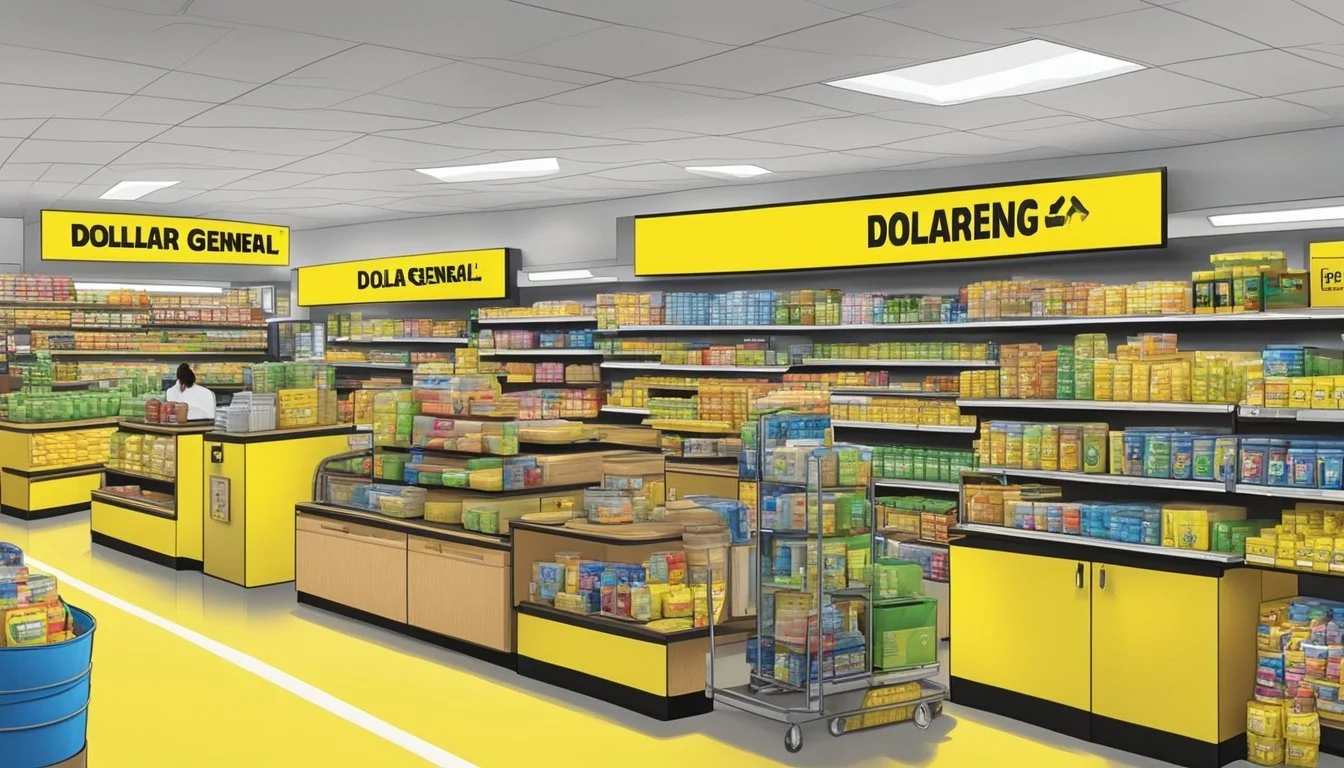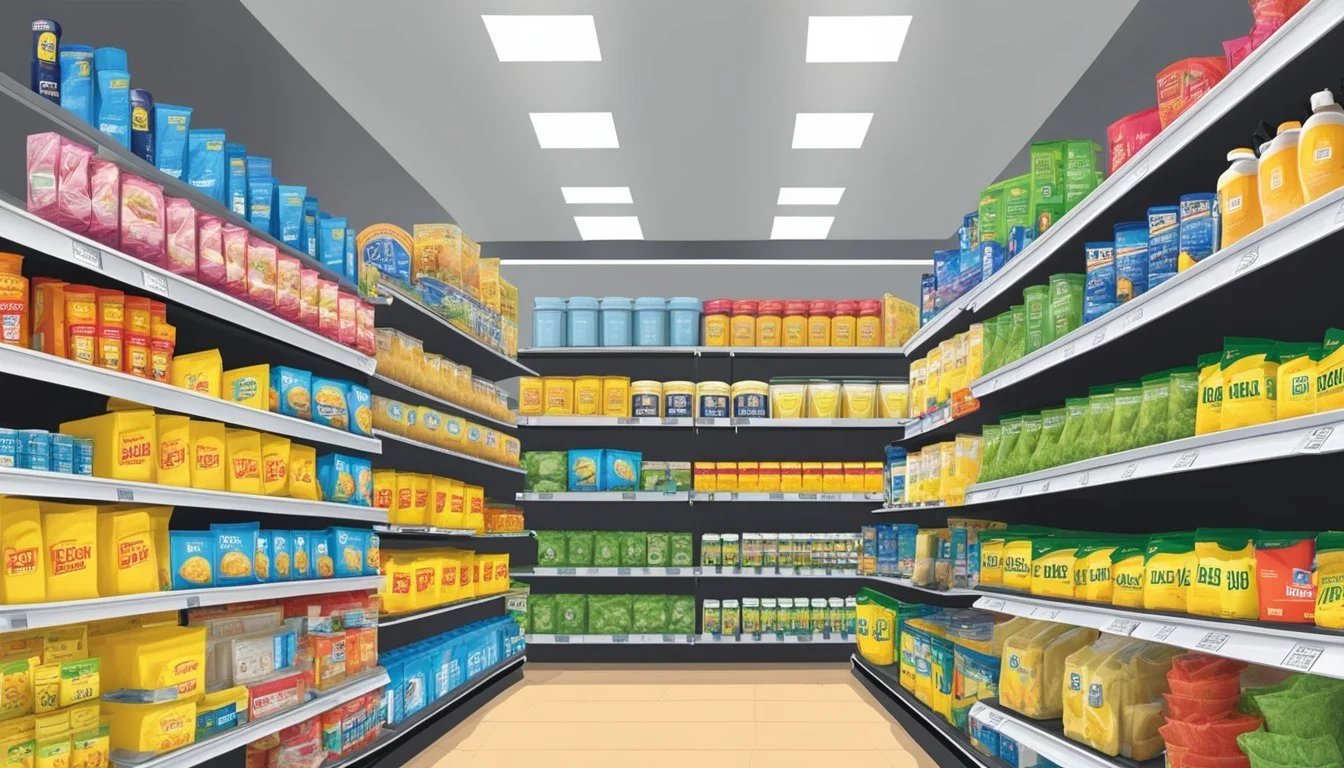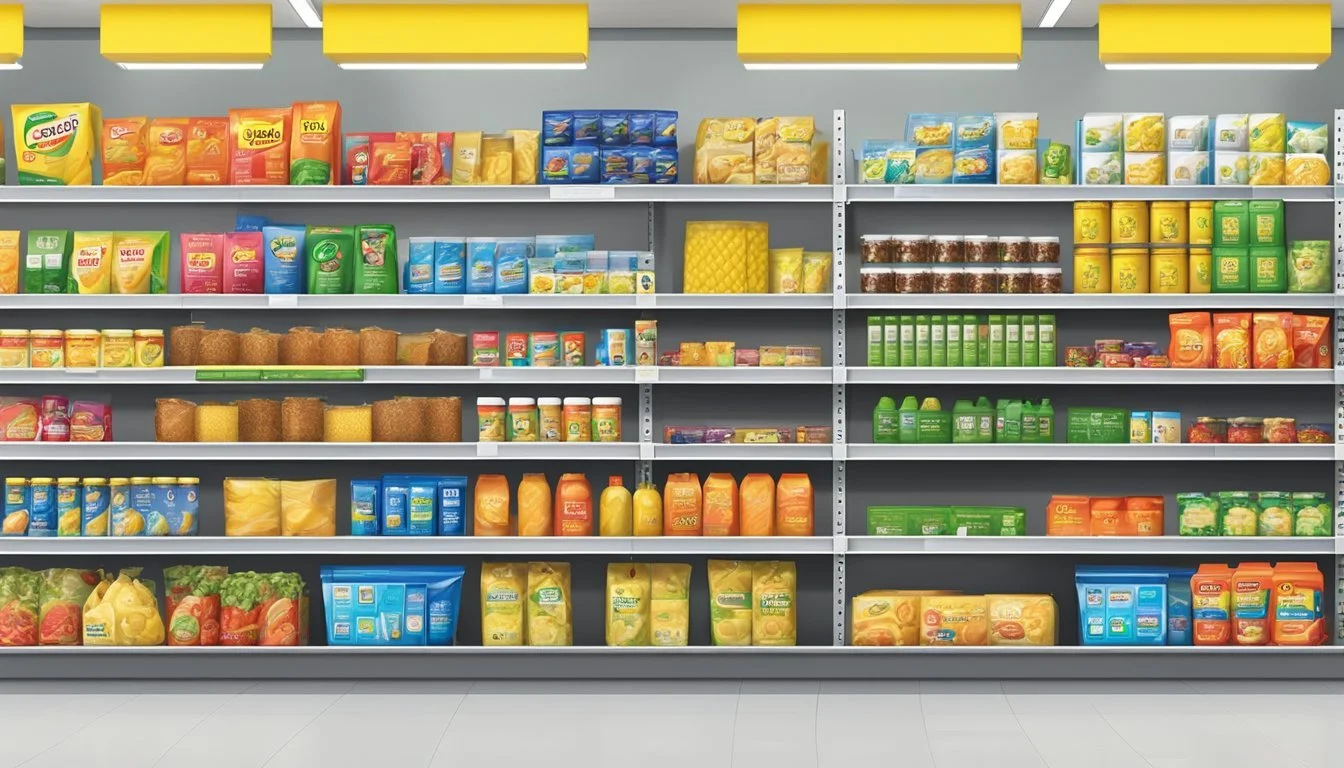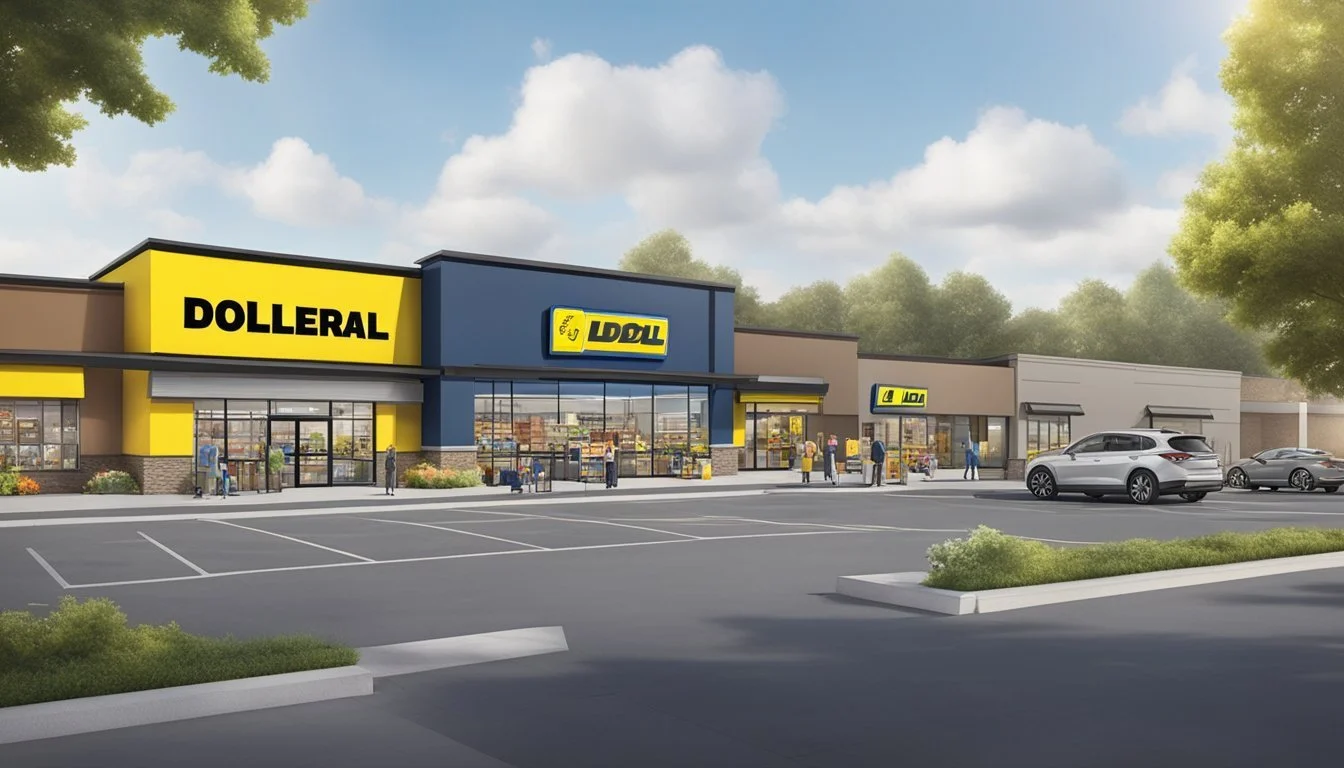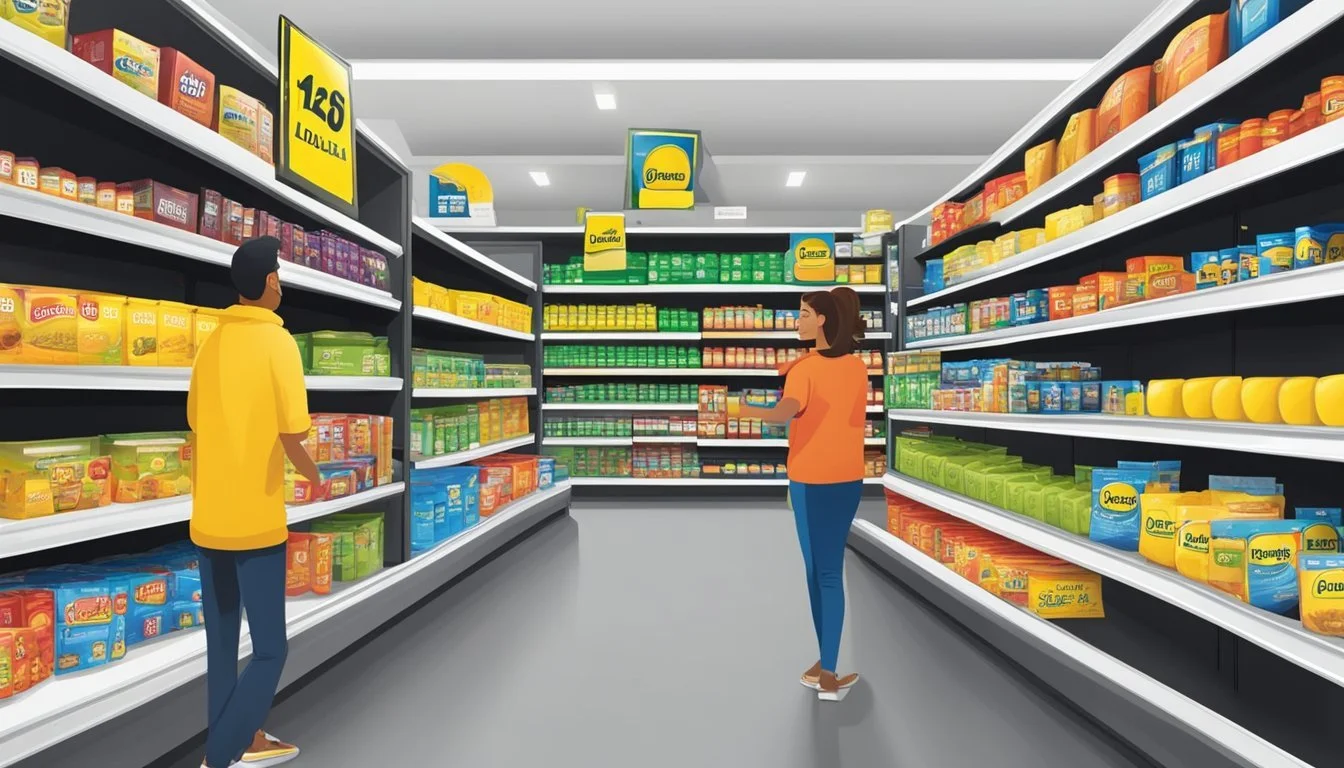Is Dollar General Cheaper Than Lidl?
A price comparison of budget retailers
Dollar General and Lidl are two popular discount retailers known for offering low prices on groceries and household essentials. Shoppers looking to stretch their budgets often compare these stores to find the best deals.
While both stores offer competitive pricing, Lidl generally tends to be cheaper than Dollar General for many items. Lidl's focus on private-label products and efficient store operations allows them to keep prices lower on average. However, Dollar General may have better prices on certain name-brand products and household goods.
Price-conscious consumers can benefit from shopping at both stores. Lidl typically offers lower prices on fresh produce, meat, and dairy products, while Dollar General may have better deals on packaged snacks, cleaning supplies, and personal care items. Comparing weekly ads and unit prices can help shoppers maximize their savings at each retailer.
Overview of Dollar General
Dollar General is a major player in the discount retail sector, known for its widespread presence in rural areas and focus on low-priced goods. The company operates thousands of stores across the United States, offering a mix of everyday essentials and discretionary items.
Business Model
Dollar General's business model centers on providing value to budget-conscious shoppers. The company keeps costs low by operating smaller-format stores, often in rural and suburban locations with lower rent. These stores typically employ fewer staff members and carry a limited selection of products.
Dollar General focuses on fast-moving consumer goods and household essentials. The company's pricing strategy aims to be competitive with larger retailers while offering the convenience of neighborhood locations. Many items are priced below $5, appealing to customers looking to stretch their budgets.
Market Presence
Dollar General has an extensive retail footprint across the United States. As of 2024, the company operates over 18,000 stores in 47 states. This widespread presence gives Dollar General significant market reach, especially in rural areas where other major retailers may not have a physical presence.
The company continues to expand rapidly, with plans to add hundreds of new stores annually. This growth strategy focuses on underserved markets and areas with limited retail options. Dollar General's store density in many regions allows it to compete effectively with larger chains and other dollar store competitors like Family Dollar.
Product Range
Dollar General offers a diverse range of products across multiple categories. The store's inventory includes:
Food and beverages
Cleaning supplies
Personal care items
Health and beauty products
Pet supplies
Household goods
Seasonal items
Basic clothing
While not a full-service grocery store, Dollar General carries a selection of pantry staples, snacks, and frozen foods. The company also offers its own private label brands, which provide lower-priced alternatives to national brands.
Dollar General's product mix is tailored to meet the everyday needs of its target customers. The company adjusts its inventory based on local preferences and seasonal demands, ensuring relevance to its shoppers.
Overview of Lidl
Lidl stands out as a major player in the global discount grocery market. The German-based chain has rapidly expanded internationally, offering a mix of private-label and brand-name products at competitive prices.
International Footprint
Lidl operates over 11,500 stores across 32 countries, primarily in Europe. The company entered the U.S. market in 2017, focusing on East Coast expansion. Lidl's growth strategy involves aggressive store openings and adaptations to local markets. In the UK, Lidl has captured a 7.7% market share, challenging established supermarkets. The chain's international success stems from its ability to tailor offerings to regional preferences while maintaining its core low-price model.
Store Offerings
Lidl stores feature a carefully curated selection of about 3,500 products, compared to 30,000+ in traditional supermarkets. The streamlined inventory includes:
Private-label brands (80-90% of products)
Fresh produce and bakery items
Rotating non-food merchandise (clothing, tools, appliances)
Limited selection of national brands
Lidl's stores emphasize efficiency with a no-frills layout and self-service model. Many locations offer in-store bakeries and fresh produce sections. The chain has expanded its organic and health-focused options to meet growing consumer demand.
Pricing Strategy
Lidl's competitive pricing is central to its business model. The chain keeps costs low through:
High volume of private-label products
Efficient supply chain management
Limited store staff and streamlined operations
Lidl often beats competitors' prices by 10-15% on comparable items. Weekly specials and rotating merchandise create a "treasure hunt" shopping experience. The company balances low prices with quality, particularly in its private-label offerings. This approach has helped Lidl attract budget-conscious shoppers and compete effectively against both discount and traditional grocery chains.
Comparative Analysis of Pricing
Dollar General and Lidl both aim to offer competitive prices, but their strategies differ. A closer look at everyday prices, discounts, and the balance between quality and value reveals key distinctions between these two retailers.
Comparing Everyday Prices
Dollar General focuses on keeping prices low across its entire inventory. Many items are priced at $1 or less, making it attractive for budget-conscious shoppers. Lidl, on the other hand, offers a mix of low-priced private label products alongside name brands.
Lidl's private label items often undercut national brand prices by 30-50%. Dollar General counters with its own store brands, though the selection is more limited.
For staple items like milk, bread, and eggs, prices tend to be comparable between the two chains. However, Lidl typically has an edge on fresh produce pricing.
Discounts and Sales
Dollar General runs weekly specials and offers digital coupons through its app. These deals can lead to significant savings on select items.
Lidl takes a different approach with its "Lidl Surprises" program. This features limited-time special buys on non-grocery items at deeply discounted prices.
Both retailers offer loyalty programs. Dollar General's DG Digital Coupons provide personalized offers, while Lidl Plus rewards frequent shoppers with coupons and discounts.
Seasonal sales are common at both chains, but Lidl tends to offer more aggressive discounts during these periods.
Quality vs. Value
Dollar General prioritizes affordability, sometimes at the expense of quality. Their inventory includes many budget versions of popular products.
Lidl strives to balance low prices with higher quality, especially in its fresh departments. The chain has won awards for its private label products, which often match or exceed the quality of national brands.
Dollar General's larger network of stores may provide more convenience for rural shoppers. Lidl, with fewer locations, focuses on offering a curated selection of high-quality items at competitive prices.
While both chains offer savings, Lidl generally provides better overall value when considering the quality-to-price ratio of its products.
Product Categories and Selection
Dollar General and Lidl offer distinct product ranges to cater to different consumer needs. Both stores provide affordable options, but their selections vary in terms of variety, quality, and brand availability.
Food and Produce
Dollar General's food section focuses primarily on packaged and frozen items. The store carries a limited range of fresh produce, often including basic fruits and vegetables. Canned goods, snacks, and beverages make up a significant portion of their food offerings.
Lidl, in contrast, places a stronger emphasis on fresh produce. The German discount chain provides a wider variety of fruits, vegetables, and organic options. Lidl also stocks an extensive selection of bakery items, meats, and dairy products.
Household Items
Dollar General excels in offering a broad range of household essentials at low prices. Cleaning supplies, paper products, and personal care items are readily available. The store also carries basic kitchenware, home decor, and seasonal items.
Lidl's household section is more limited but still covers essential categories. Cleaning products, toiletries, and basic home goods are available. Lidl occasionally features special buys on household items, which can include kitchen appliances or home improvement tools.
Name-Brand Products
Dollar General stocks a mix of national brands and private-label products. Popular name-brand items are available across various categories, including food, personal care, and household goods. The store's own brands offer cheaper alternatives to well-known labels.
Lidl primarily focuses on its own private-label products, which often match or exceed the quality of national brands. Name-brand items are less common in Lidl stores but can be found in limited quantities. Lidl's approach allows for consistently low prices across its product range.
Consumer Shopping Experience
Dollar General and Lidl offer distinct shopping experiences, each with its own advantages. Store layout, checkout options, and customer service vary between the two retailers, impacting how customers navigate and complete their grocery shopping.
Store Layout and Navigability
Dollar General typically features smaller stores with narrow aisles and packed shelves. Products are organized by category, but the layout can feel cramped. Signage helps customers locate items, though some find navigation challenging due to limited space.
Lidl stores are larger and more open, with wider aisles and a logical flow. The center aisles often showcase rotating non-grocery items. Clear signage and an intuitive layout make it easier for shoppers to find what they need quickly.
Both stores stock a mix of grocery and household items, but Lidl generally offers a broader selection of fresh produce and bakery goods.
Checkout and Payment Options
Dollar General provides traditional checkout lanes with cashiers. Some locations offer self-checkout kiosks to reduce wait times. The company has introduced digital coupons and a rewards program accessible through their mobile app.
Lidl employs a unique checkout system where customers bag their own groceries at a separate counter after paying. This approach aims to speed up the checkout process. Lidl accepts various payment methods, including contactless options.
Both retailers offer competitive prices, but Lidl often edges out Dollar General on grocery items. Lidl's weekly specials can lead to significant savings on the grocery bill.
Customer Service
Dollar General maintains a no-frills approach to customer service. Staff members are generally available to assist, but the focus is on efficiency rather than extensive personal attention.
Lidl emphasizes a balance between efficiency and helpfulness. Employees are trained to assist customers quickly while maintaining a friendly demeanor. The stores are typically well-staffed during peak hours to ensure smooth operations.
Both retailers prioritize keeping shelves stocked and maintaining clean store environments. However, Lidl's larger store size often allows for a more comfortable shopping experience.
Economic Factors and Affordability
Dollar General and Lidl both aim to provide affordable options for consumers. Their strategies and pricing models are influenced by broader economic trends and consumer spending habits.
The Impact of Inflation
Inflation has pushed many shoppers to seek out budget-friendly alternatives. Dollar General has expanded rapidly, opening 500 new stores in early 2020. The chain's net sales increased by 24.4% during this period. Lidl, part of the growing discount retail sector, is expected to see 4.9% annual growth through 2024.
Rising prices have made value-focused stores more appealing. Both chains adapt their pricing and product offerings to maintain affordability. They often stock smaller package sizes to keep unit prices low.
Budget-Friendly Shopping Tips
Compare unit prices between stores
Look for store-brand products, which are often cheaper
Check weekly ads for special deals
Buy in bulk for non-perishable items when prices are low
Use store loyalty programs to earn rewards
These strategies can help maximize savings at both Dollar General and Lidl. Each chain offers unique promotions and discounts to attract budget-conscious shoppers.
Economic Efficiency of Both Chains
Dollar General and Lidl employ different tactics to keep costs down. Dollar General focuses on small-format stores in rural and urban areas. This reduces overhead and allows for strategic product placement.
Lidl uses a limited-assortment model, stocking fewer items than traditional supermarkets. This approach streamlines operations and reduces costs. The chain also emphasizes private-label products, which typically offer higher profit margins.
Both companies leverage their scale to negotiate better prices from suppliers. They pass these savings on to customers, helping maintain low prices even during economic downturns.
Regional and Demographic Considerations
Dollar General and Lidl have distinct strategies for store placement and customer targeting. These factors significantly influence their pricing and product offerings in different areas.
Rural vs. Urban Availability
Dollar General has a strong presence in rural America, with thousands of stores in small towns and communities. The company targets areas with populations under 20,000, often becoming the primary shopping option for residents.
In contrast, Lidl focuses more on urban and suburban locations. Their stores are typically found in more densely populated areas, competing directly with traditional supermarkets like Publix in Florida.
This difference in location strategy affects pricing. Dollar General may have higher prices in rural areas due to less competition, while Lidl's urban presence keeps prices competitive.
Demographic Targeting
Dollar General aims to serve low- to middle-income shoppers, offering a mix of national brands and private labels. Their stores stock essential items at varying price points to cater to budget-conscious consumers.
Lidl targets a broader demographic range, including middle-class shoppers looking for high-quality products at lower prices. They emphasize their private label offerings, which often match or exceed the quality of national brands.
In states like Texas, where both chains operate, Dollar General tends to have more stores in lower-income neighborhoods. Lidl, however, positions itself in areas with a mix of income levels, attracting customers with its European-style shopping experience and perceived value.
Competitive Landscape
Dollar General faces stiff competition from other discount retailers and grocery chains in the US market. Its positioning and pricing strategies aim to differentiate it from key rivals.
Comparison with Other Retailers
Dollar General's main competitors include Dollar Tree, Walmart, and Aldi. Dollar Tree operates over 16,000 stores nationwide, offering products at $1 or less. Walmart leverages its massive scale to provide low prices across a wider product range. Aldi focuses on private-label goods to keep costs down.
Kroger and Costco compete in the grocery space, with Costco targeting bulk buyers. Winco and Whole Foods occupy different market segments - Winco as a low-price leader and Whole Foods in the premium organic niche. Amazon poses a growing threat through its online dominance and expansion into physical retail.
Dollar General aims to beat competitors on convenience with its many small-format stores in rural and suburban areas. It offers a mix of national brands and private labels at competitive prices.
Market Positioning Strategy
Dollar General positions itself as a low-price, convenient option for everyday essentials. Its stores are typically smaller than Walmart or grocery chains, allowing placement in areas other retailers avoid. This strategy targets value-conscious shoppers in underserved markets.
The company stocks a focused selection of frequently purchased items. It aims to be a fill-in destination between larger grocery trips. Dollar General's private brands help it offer lower prices than some competitors.
To compete with online retailers like Amazon, Dollar General has expanded its digital presence. It offers in-store pickup for online orders and is testing home delivery services in select markets. The company also uses data analytics to optimize its product mix and pricing.
Loyalty Programs and Customer Perks
Dollar General and Lidl both offer loyalty programs to incentivize customer retention and provide savings opportunities.
Dollar General's DG Digital Coupons program allows customers to load digital coupons onto their account for use at checkout. Members can access exclusive deals and discounts through the Dollar General app or website.
Lidl's loyalty program is less extensive but still provides value. The Lidl app offers digital coupons and weekly specials that customers can access easily.
Both retailers frequently run promotions and sales events for additional savings. Dollar General tends to have more regular coupon offers, while Lidl focuses on consistently low everyday prices.
Key differences in loyalty perks:
Dollar General: More extensive digital coupon program
Lidl: Emphasis on everyday low pricing rather than complex rewards
Neither chain currently offers a paid membership program like some larger retailers. Their focus is on providing accessible savings to all customers through digital tools and regular promotions.
Customers looking to maximize savings should utilize the digital offerings from both stores. Combining app-based discounts with in-store promotions can lead to significant price reductions on many everyday items.
Future Trends in Grocery Retail
The grocery retail landscape is poised for significant changes driven by technological innovations and economic shifts. These developments will reshape how consumers shop and how retailers operate.
Technological Advancements
Artificial intelligence is set to revolutionize grocery shopping experiences. AI-powered systems will enhance personalization, offering tailored product recommendations and promotions to individual shoppers. Smart carts equipped with screens will guide customers through stores, suggesting recipes and locating items efficiently.
Cashierless checkout technology, pioneered by Amazon Go, is likely to become more widespread. This will reduce wait times and labor costs for retailers. Automated inventory management systems using robotics and computer vision will optimize stock levels and reduce waste.
Augmented reality apps may allow shoppers to virtually try products or view nutritional information by simply pointing their smartphones at items. Blockchain technology could improve food traceability, addressing consumer concerns about product origins and safety.
Predictions for Groceries Post-Inflation
As inflationary pressures potentially ease, grocery chains may adjust their strategies. Private label products, which gained popularity during high inflation, are expected to maintain their market share due to improved quality and value perception.
Discount chains like Aldi, Lidl, and Dollar General are likely to continue expanding their footprint. These retailers may focus on fresh produce and healthier options to attract a broader customer base.
Traditional supermarkets might invest more in their deli and prepared foods sections to compete with restaurants and meal delivery services. Subscription-based models for staple items could gain traction, offering consumers convenience and predictable pricing.
Online grocery shopping and home delivery services are projected to grow, with retailers improving their fulfillment capabilities. However, physical stores will remain relevant by offering unique in-store experiences and acting as hubs for online order pickups.


